I love exploring local supermarkets when I travel abroad because I can learn about the daily lives of locals, particularly the essential elements of regional cuisine, from the ingredients, seasonings, beverages, native vegetables, and fish on the shelves. For the same reasons, I enjoy roaming the floors of department stores, where I can see many local items and products designed specifically for local customers.
In Japan, department stores also offer a variety of takeaway meals on the basement floor, which includes rare but famous local dishes from around the country. Notably, local Japanese department stores serve as a museum, showcasing the culture and traditions still in use today, while also offering a high-class food street experience with a diverse array of Japanese cuisine. Why don’t you try visiting one of the department stores in Tokyo? It’s fun and exciting!

I recommend visiting Nihonbashi Mitsukoshi Department Store, one of Japan’s oldest and longest-established stores, located in central Tokyo. It was first established by Takatoshi Mitsui, a family member of the Mitsui, now Mitsui Financial Group, as an apparel shop named Echigo-Ya, which sold traditional Japanese clothing, kimonos, as well as fabrics for them. Today, I would like to introduce the uniqueness of Nihonbashi Mitsukoshi.
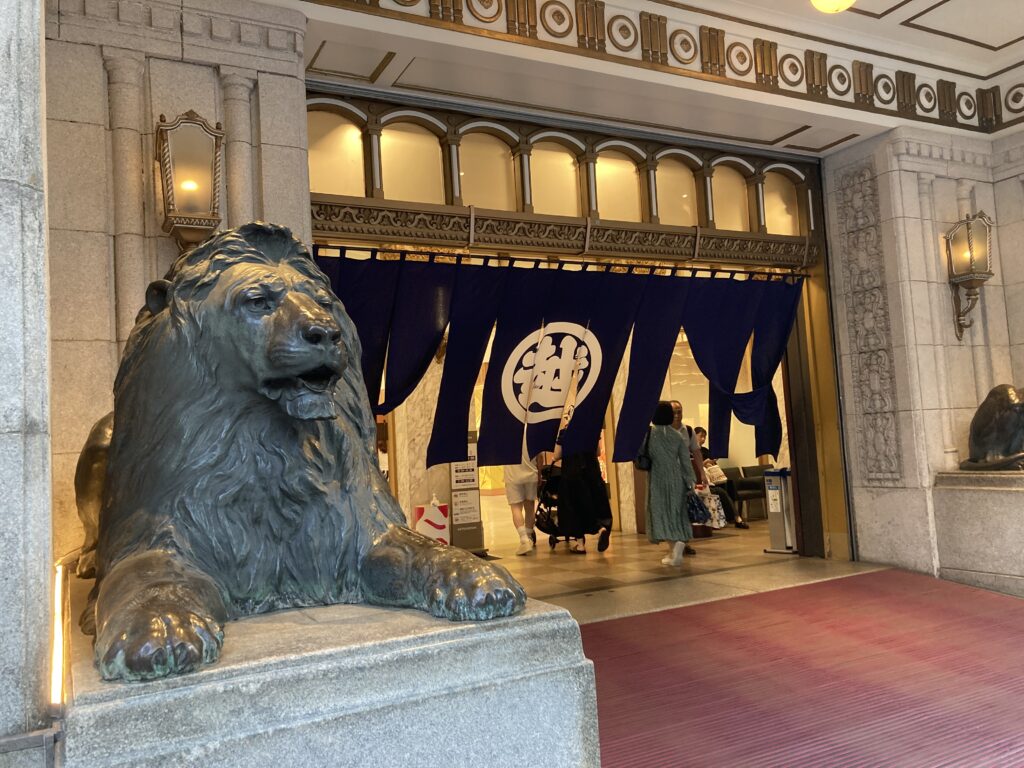
I am sure you can enjoy browsing through a wide variety of merchandise on every floor. Some of them are kimonos, others are traditional plates, dishes, and chopsticks. All are authentic, selected by professional buyers who constantly travel around Japan to find something unique and valuable. It’s absolutely fun to learn more about traditional Japanese products; however, I would like to share with you my favorite ways of enjoying Nihonbashi Mitsukoshi on the basement floor and the top floor.
Soon after you step onto the basement floor, you can find excellent indoor food streets. There are many glass showcases lined up and selling various to-go meals. Even some promoting stalls offer a bite to taste their meals. The Japanese refer to these types of basement shopping floors as “Depa-Chika.” “Depa” is a short form of department store, and “Chika” means basement.
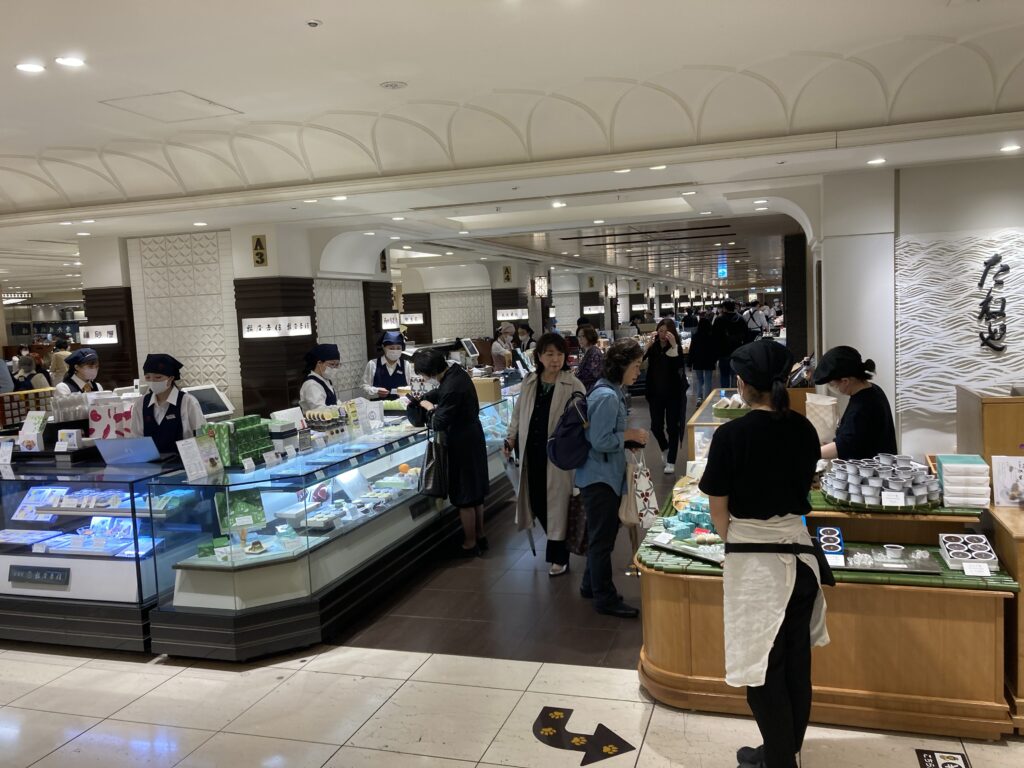
You can buy Obento, a Japanese lunchbox filled with many small portions of dishes (left), and tonkatsu, Japanese pork cutlets (right).
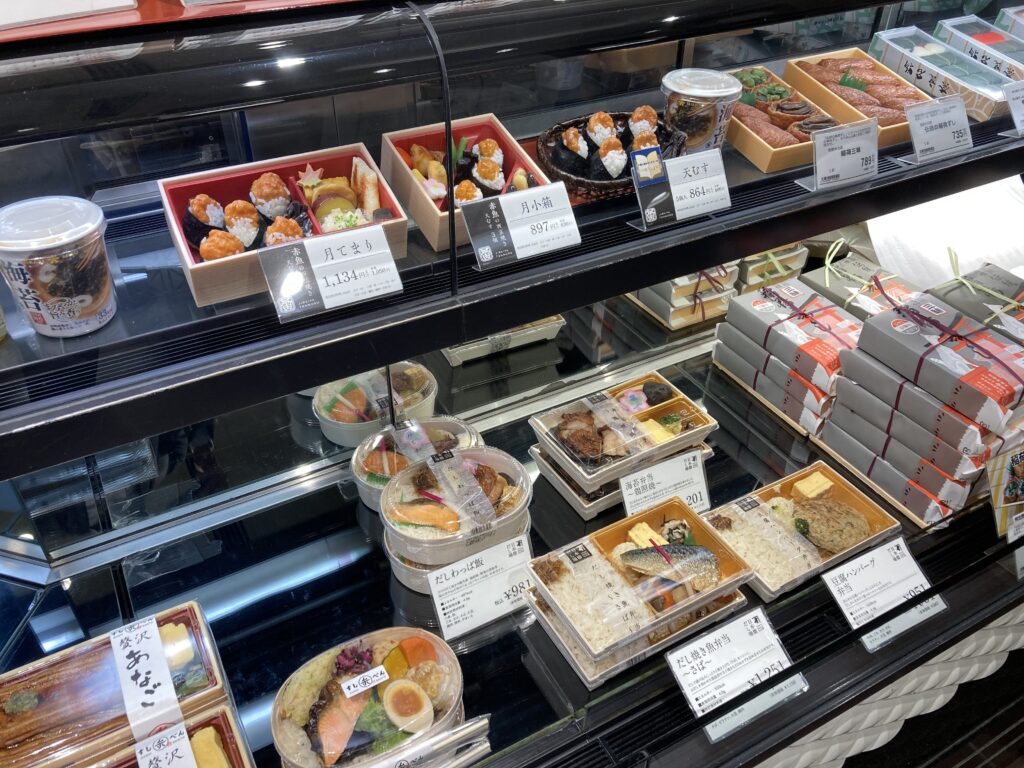
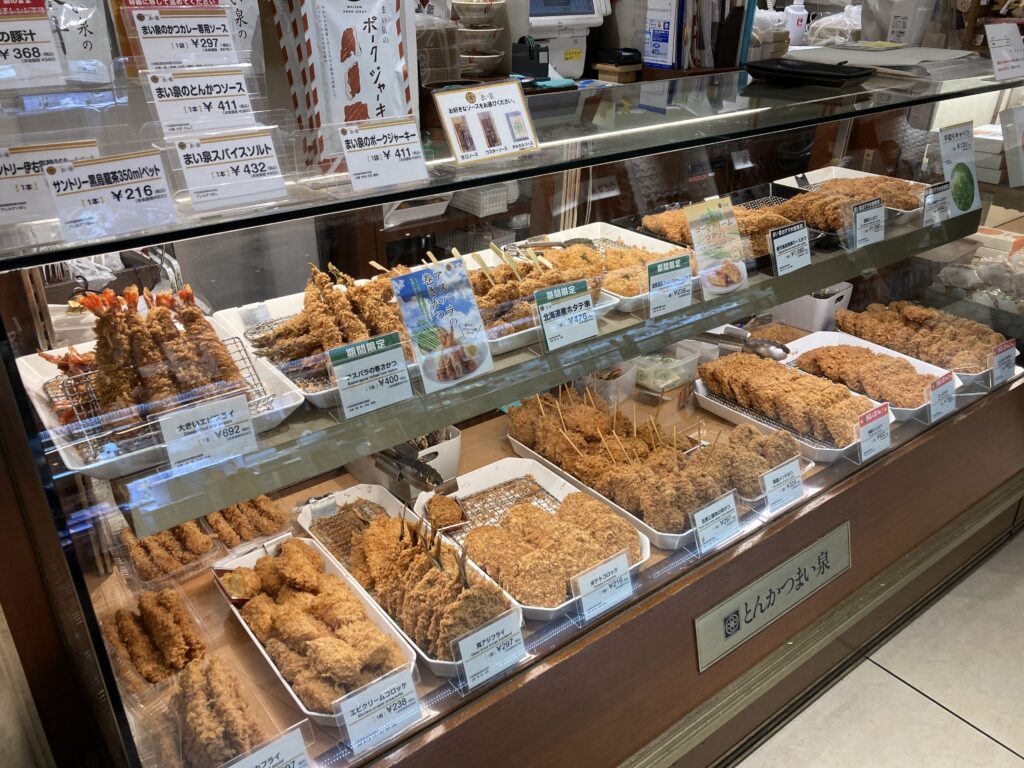
Onigiri, rice balls with various ingredients (left), and okowa, seasoned steamed rice, definitely go well with other dishes.
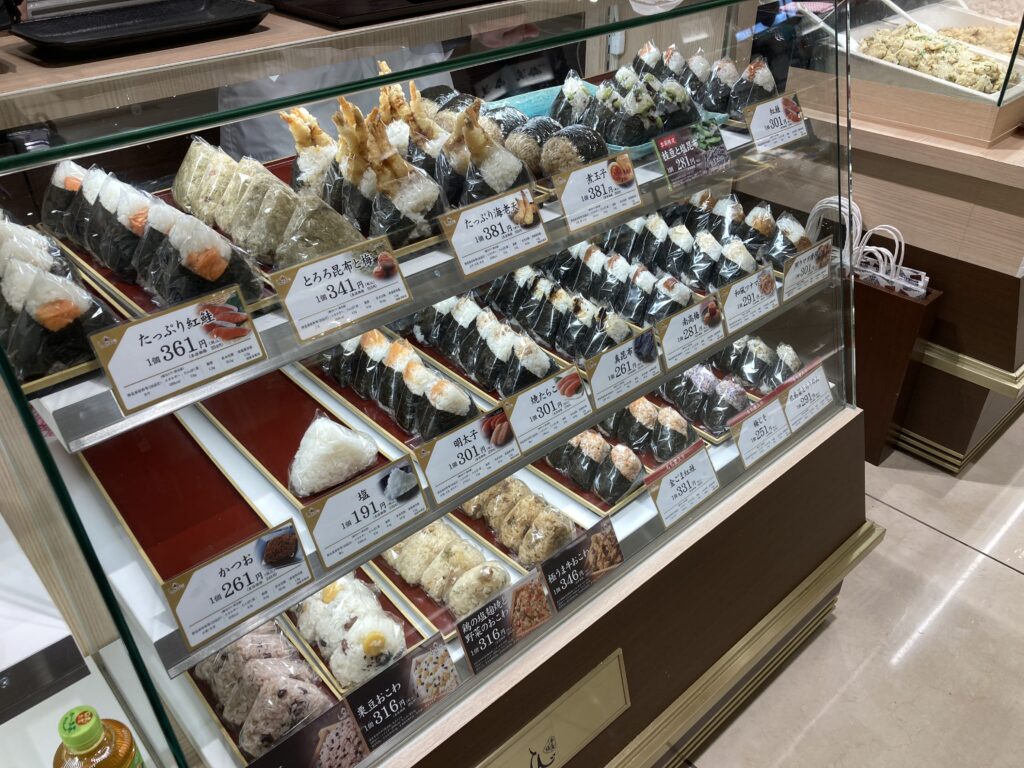
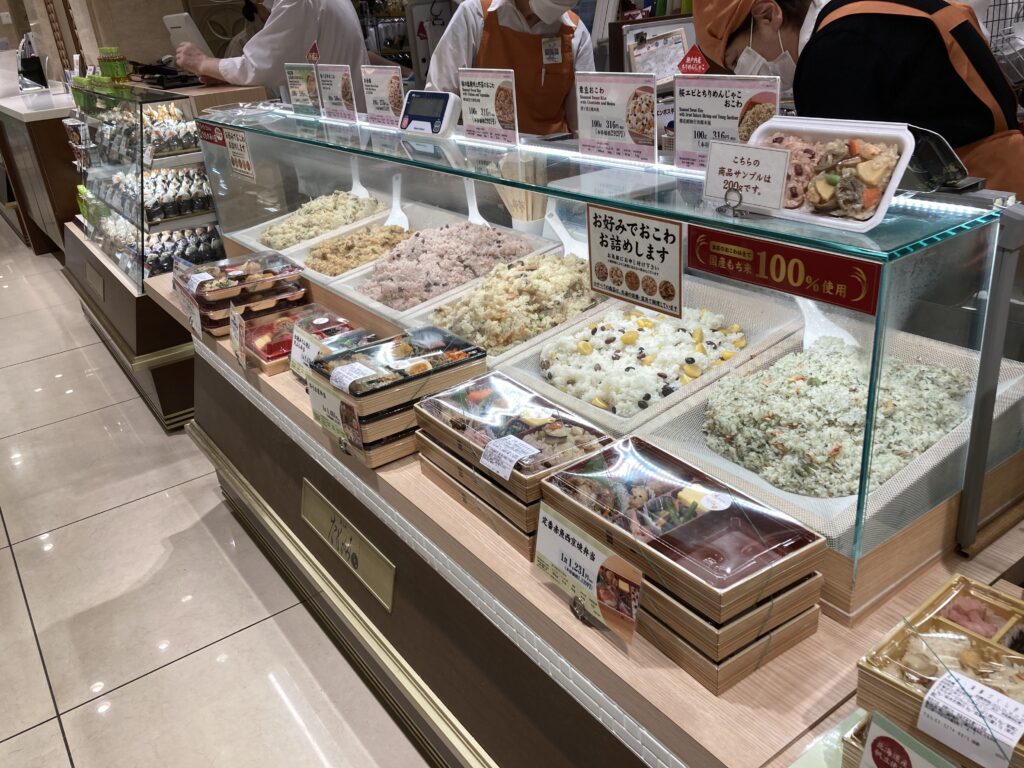
You can buy an authentic Unagi, grilled eel, seasoned with a delicious deep soy sauce and other seasonings, served over steamed rice, and take it back to your hotel room.


If you have not tried the Unagi yet and hesitate to eat it, please take a look at another blog post about Unagi.
Of course, you can not eat it right in front of the shops, but there is a secret place where you can enjoy it immediately at lunchtime. Let’s go up to the roof!
On the roof, there is a beer garden, but it is not open until 17:30. You can use a table and chairs, and spread the food you purchased from the basement food stalls on the table to share with your partner, friend, or family. You can also get drinks from the vending machines.

After enjoying the meals, please go to the far end of the floor, where you can find a bonsai shop showcasing the beautiful art of Bonsai. I’ve heard that some of the larger-sized bonsai have taken decades to grow to their current size. I admire the patience and significant efforts of bonsai artists in caring for their living works.
For more details about the lunch on the rooftop, please visit another post below.

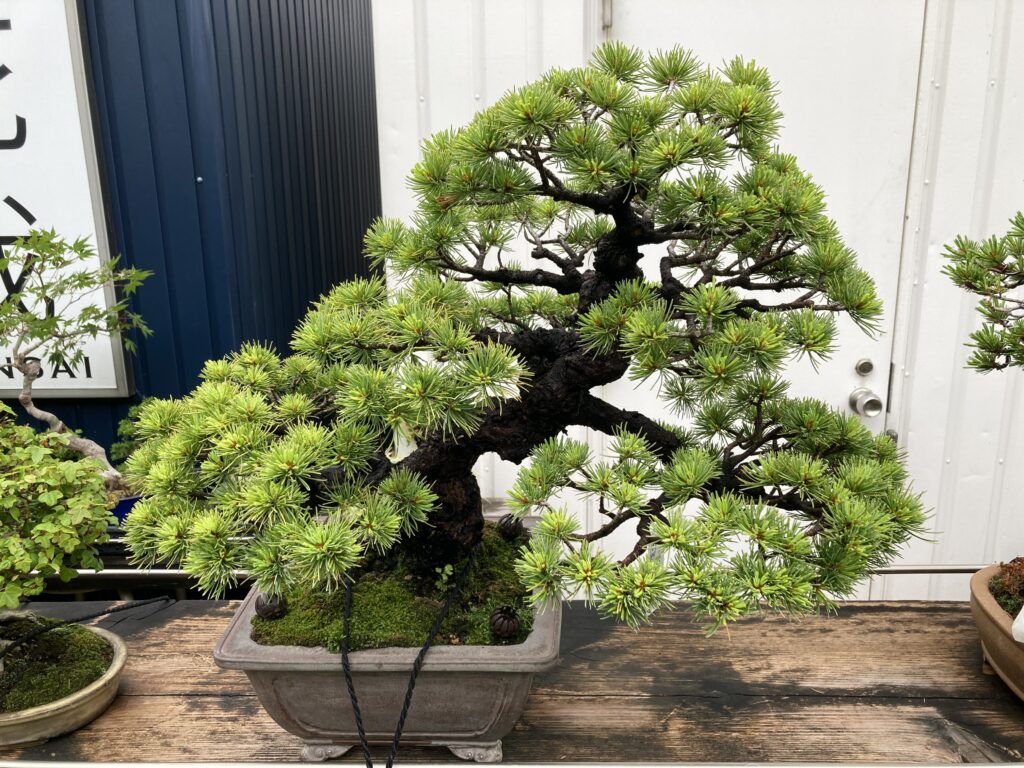
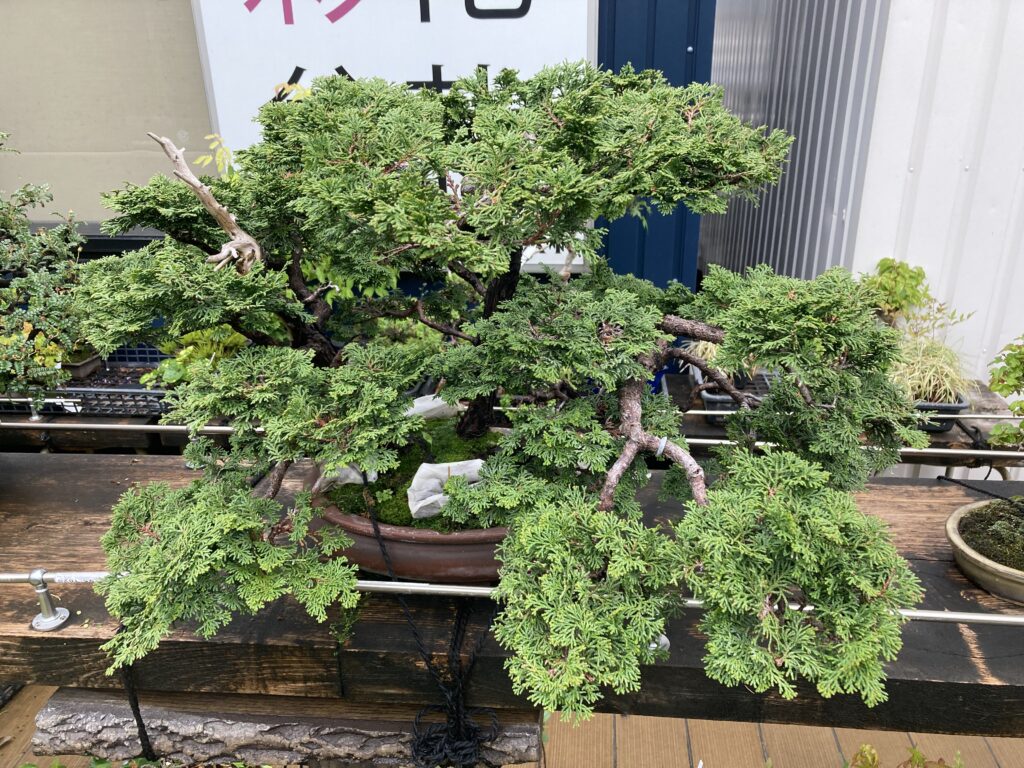
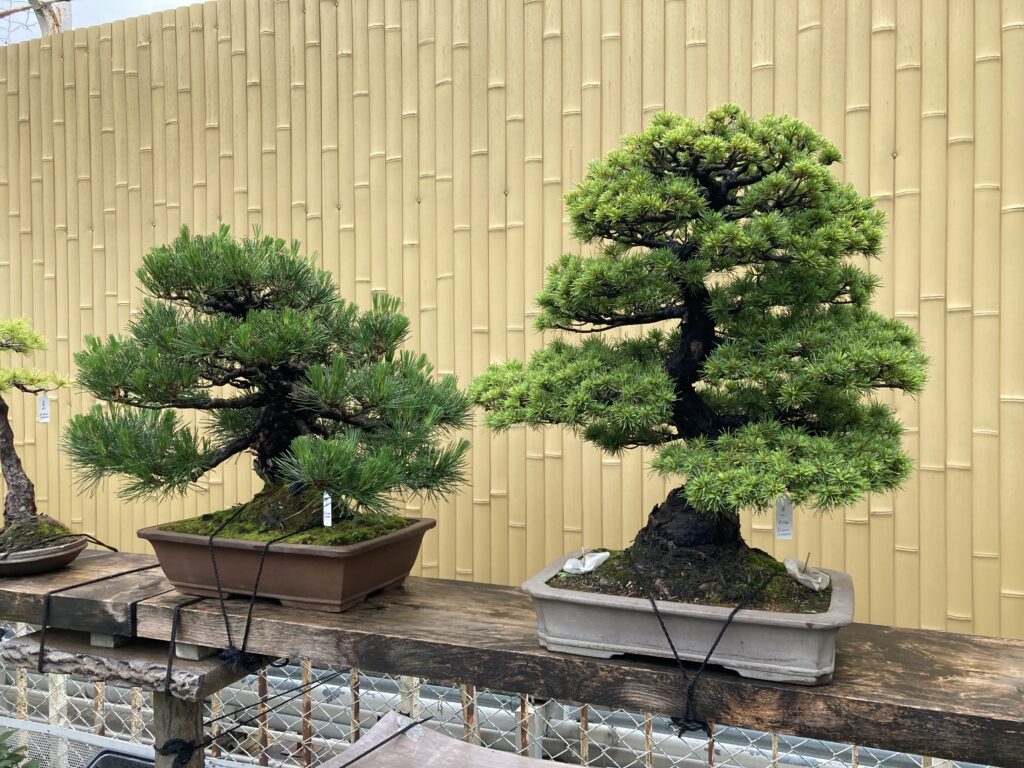
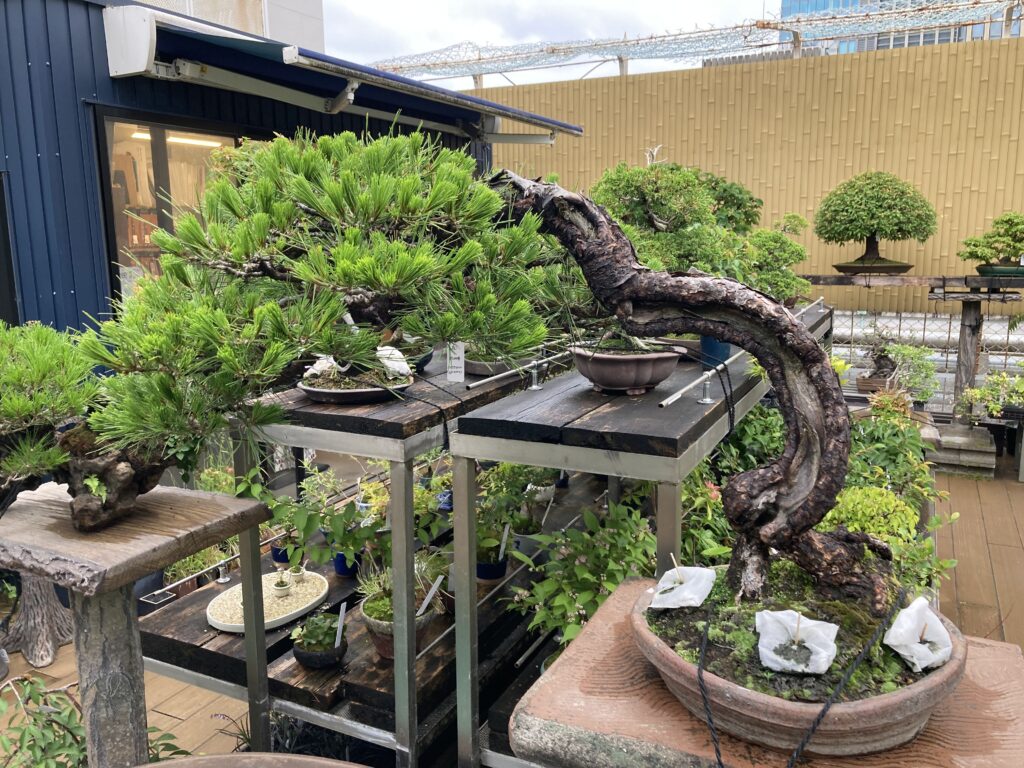
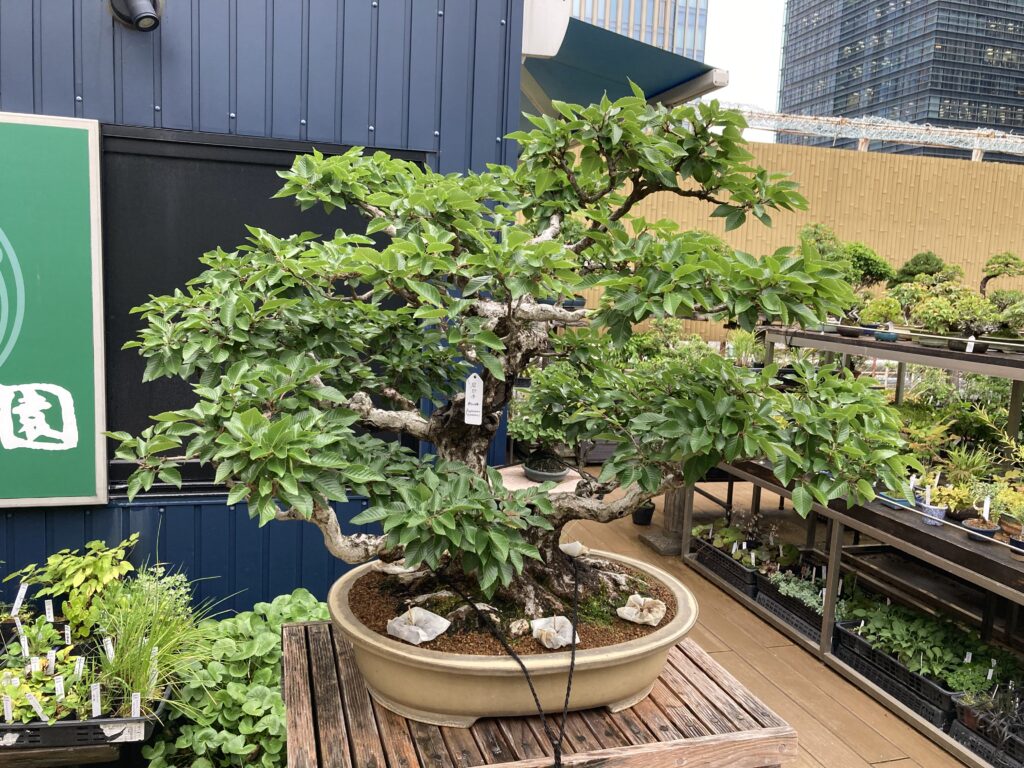
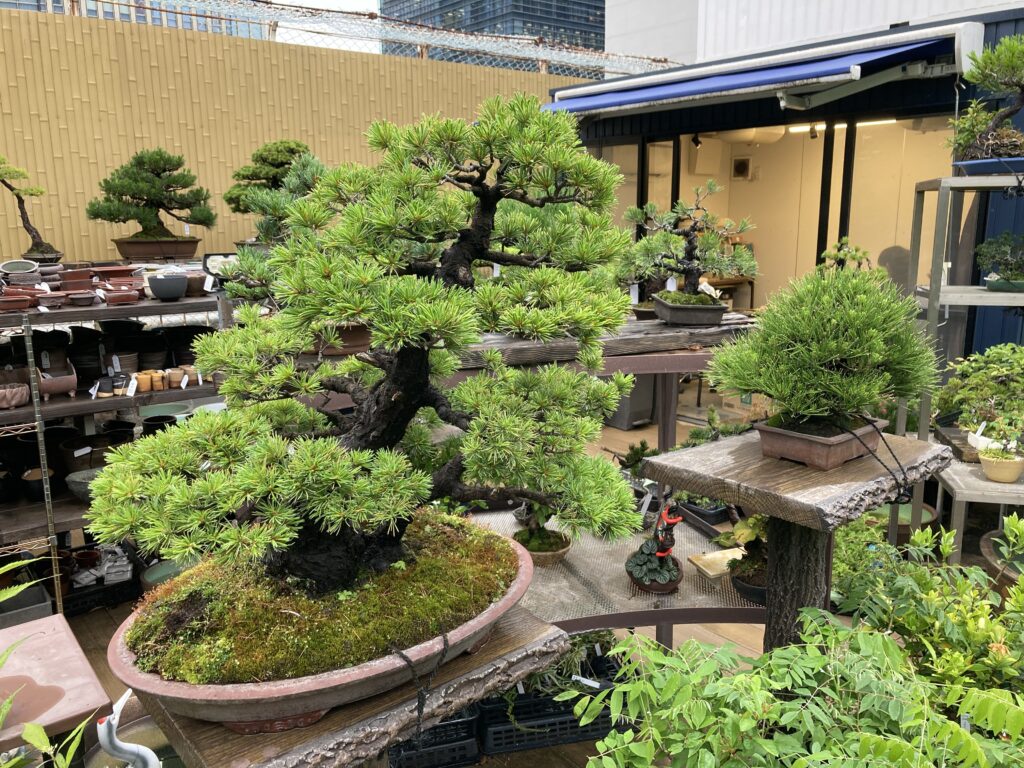
Surprisingly, there is a shrine, Mimeguri Jinja, on the roof of the eight-story building. It is the Mitsui family shrine, which was disenshrined from the original one located in Mukoujima, Tokyo. Please examine the two symbols below. The left is a Japanese kanji character and part of the shrine’s name, meaning “surrounding.” It surrounds “#”-like mark, which sounds “i” in Mitsu-“i”. So, it is regarded that four walls protect “i” (=Mitsui). Then the symbol on the right is the current crest of Mitsui & Company. Three horizontal lines form the kanji character “three” or “mitsu” in Japanese, and again, it means “mitsu” (=Misui) is protected by four walls.
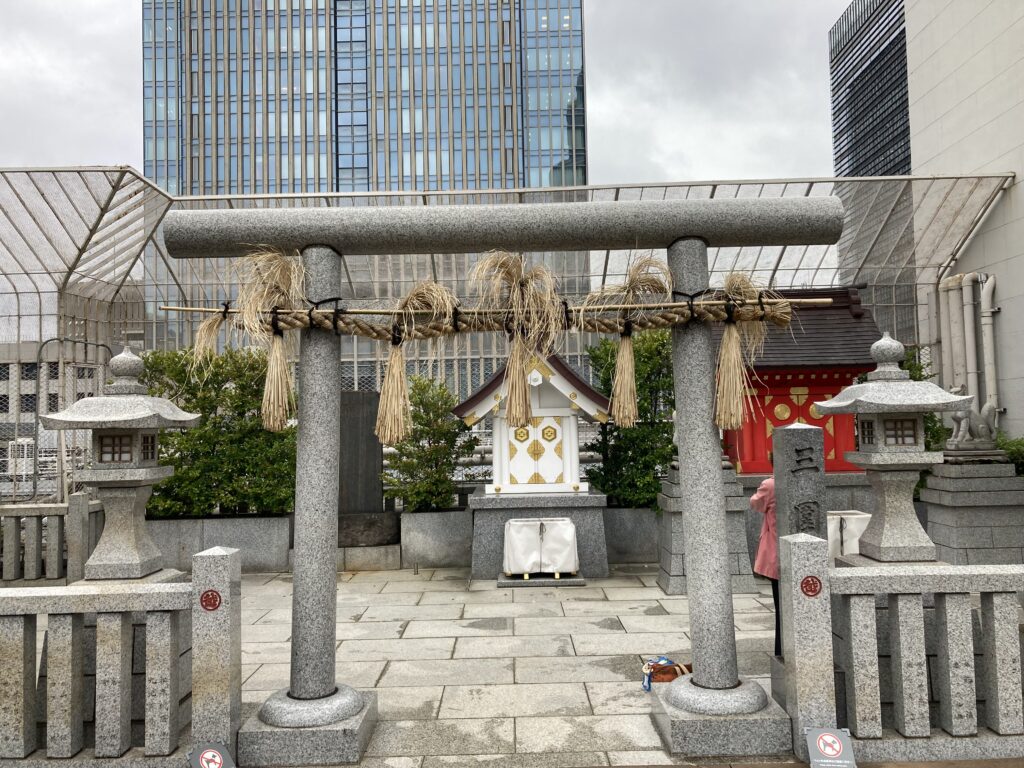
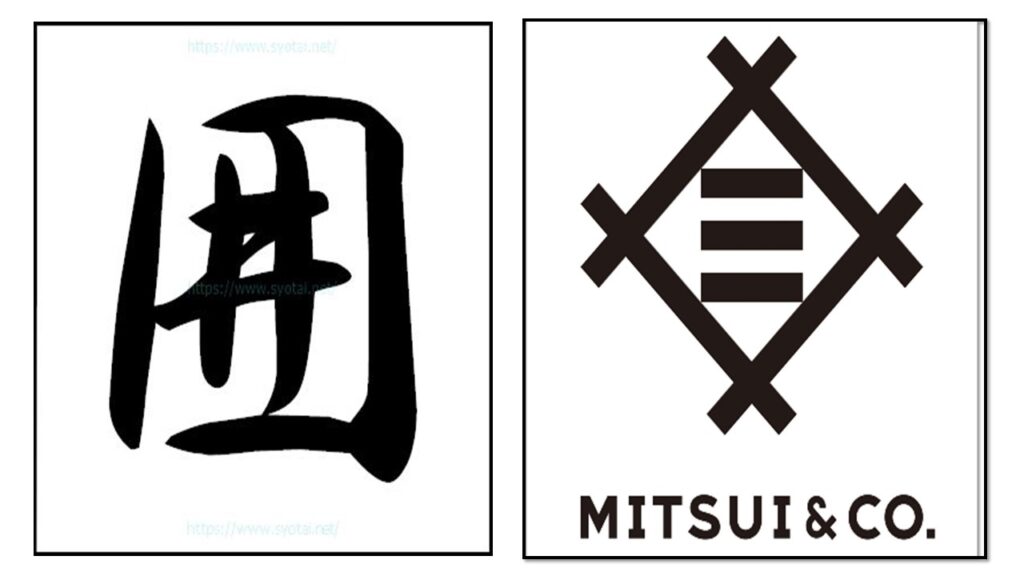
I am confident that you can spend one or more hours enjoying traditional Japanese items, meals, and bonsai at Nihonbashi Mitsukoshi, located just above the Mitsukoshimae station on the Ginza or Hanzomon Lines. It’s very close to Tokyo Station, the Imperial Palace, or on the way to Asakusa from central Tokyo.
Thank you for reading my blog post. If you need an English-speaking guide to explore some of Tokyo’s hidden gems, please message me via the “Contact me!” box below. I will do my best to make your stay in Tokyo a memorable one!
Please click the links to get updated via my X (former Twitter) and Instagram.
X (former Twitter): https://x.com/ToruGuide
Instagram: https://www.instagram.com/toruhigaki/





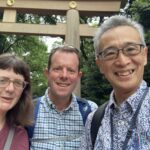

Comment